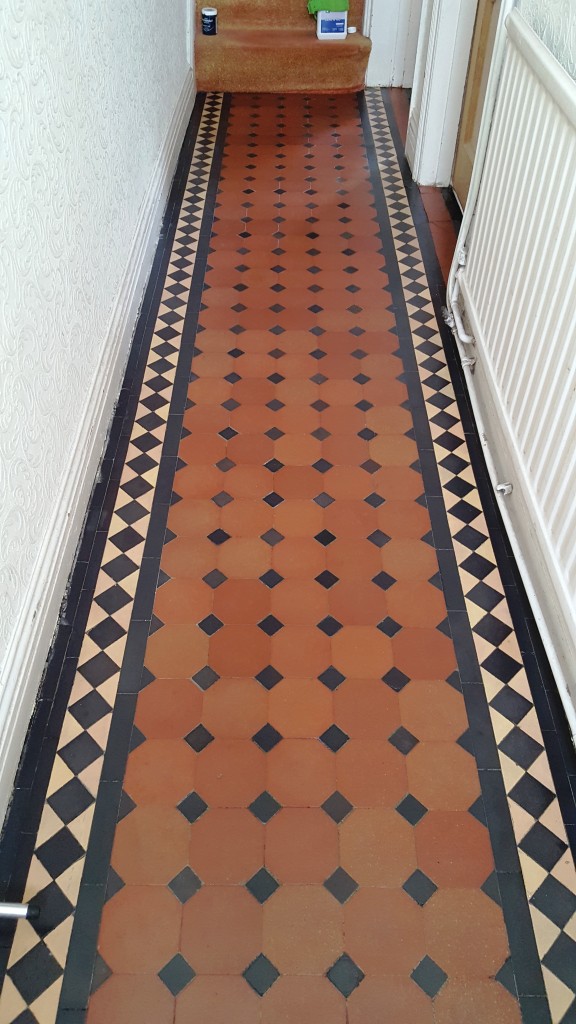
It was in a bad state, however replacing the floor would incur a significant cost and the original characteristics of the period floor would be lost. The customer was feeling rather deflated and was left undecided on what to do. Fortunately after browsing the web for a solution, she came across Tile Doctor and I was asked to pop over and take a look. I visited the customer at her home and removed parts of her hallway carpet to get a better look at the Victorian tiles beneath. The floor was certainly in a very poor state, there were many old paint splash marks covering the tiles and the surface of the floor was deeply darkened after many years’ worth of wear and tear. In my opinion however, it was still salvageable, and the customer was happy to see what could be done.
Cleaning an Original Victorian Tiled Floor
A week before I was due to start the restoration, I asked the customer to remove the foam-backed carpet to let the floor breathe a bit. Before beginning the work, I ran a few damp tests and the floor proved surprisingly dry considering how old it is and the very probable lack of a damp proof membrane. I started by manually scraping as much of the old paint staining off the stone as possible and cleared other debris from the surface. Knowing that clay based Victorian tiles like these easily soak up paint splashes, I knew it would take a thorough clean to remove them completely. I firstly soaked the floor with water and left it to dry slightly before mixing a concoction of Tile Doctor NanoTech HBU, Tile Doctor Pro-Clean, and Tile Doctor Remove and Go. NanoTech HBU is a particularly powerful cleaner which uses nano-sized particles to penetrate the pores of the stone, while Pro-Clean is an alkaline-based cleaner that tackles heavy soil build-up. Remove and Go is a multi-purpose product which both cleans and strips away any old sealer. I left this mixture to dwell on the floor for around half an hour, scrubbed it in firstly using a black scrubbing pad fitted to a rotary machine and then a wire wool pad. I followed by rinsing the products off with water and extracted up the excess with a wet vacuum machine. This technique was repeated until I was satisfied with the condition of the floor.Sealing an Original Victorian Tiled Floor
After leaving the floor to dry off completely overnight, I returned to the property the next day to carry out the sealing process. I applied seven coats of Tile Doctor Seal and Go, which not only adds a protective covering to the tile, but also enhances its appearance. The customer was absolutely thrilled with the results of the restoration, especially considering that she was told the floor was ruined by a leading company and not worth saving.
Source: Victorian Tile Cleaning and Restoration Service in South Wales










